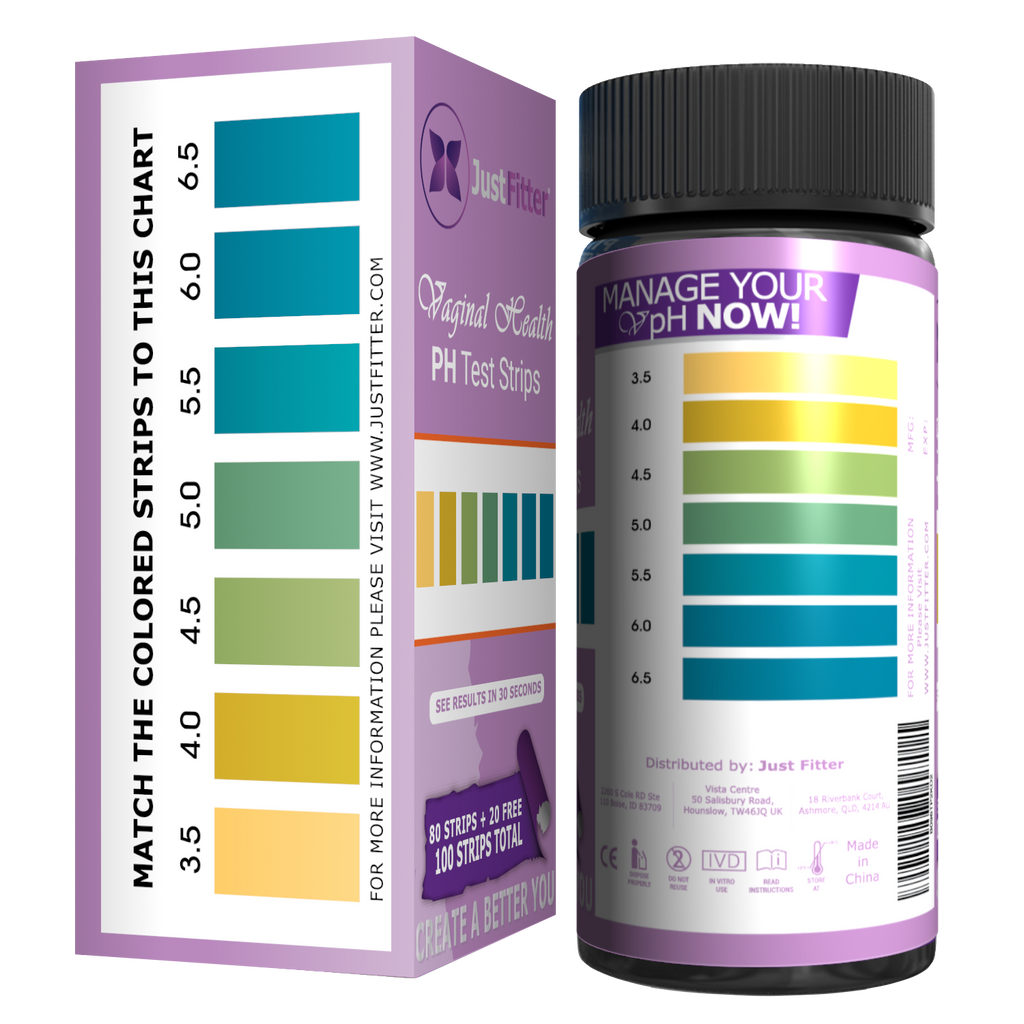What Should Be Your Vaginal pH?
Posted by Just Fitter on
The normal vaginal pH is between 3.8 and 4.5. It can be affected by many factors, including your diet, lifestyle and medication use. If your pH level is too high or too low, it can lead to vaginal yeast infections or bacterial vaginosis (BV). BV occurs when there are changes in the balance of certain bacteria in the vagina that may cause an unpleasant odor or irritation that causes discomfort during sex.
What is the vaginal pH?
Vaginal pH is a measure of how acidic or alkaline your vagina is. It's measured on a scale from 1 to 14, with 1 being the most acidic and 14 being the most alkaline. The normal range for vaginal pH is between 3.8 and 4.5, which means it should be neither too acidic nor too basic (i.e., over 6).
The acidity of your vaginal secretions plays an important role in its health: if you're experiencing symptoms like burning during sex or painful intercourse, then there may be an imbalance between what comes out of you and what goes in through intercourse—this makes sense because many women complain about feeling "too much" when they go down on their partners. This can happen if they don't have enough natural lubrication that helps keep everything moving smoothly inside them; so even though this might not sound like something anyone would want happening regularly all day long throughout their lives (especially if those activities involve penetration), having just enough time during each session could help keep things running smoothly.
What causes an abnormal pH?
There are a number of reasons why you might notice an abnormal pH. One of the most common is bacterial or yeast infections, which can lead to unpleasant odor and discharge. Pregnancy also disrupts your vaginal flora and causes an increase in the number of bacteria in your vagina. When this happens, it's important to keep track of what medications you're taking so that you don't accidentally cause an imbalance by taking one that irritates your body's natural balance.
Following childbirth (especially Cesarean section), hormones can change dramatically as well: postpartum bleeding may occur more frequently during this time period than usual; excess fluid retention can make sitting down difficult; mood swings could occur due to fluctuating hormone levels—all things that could cause discomfort down there if not properly managed! Hormonal changes are another reason behind abnormal vaginal ph readings.
How can I test my pH at home?
You can test your vaginal pH at home by using a pH testing device or strips. You can buy these products from a pharmacy or online, and they're relatively inexpensive. Some people prefer to use the strips because they require no special equipment; others may find that using a device is more convenient.
What can I do to lower my pH if it is too high?
If your pH is too high, there are some things you can do to lower it.
- Eat a healthy diet: Eating whole foods, fruits and vegetables will help keep your body alkaline and improve its ability to absorb nutrients.
- Drink more water: Water helps flush out toxins from the kidneys, which can cause an imbalance in your body's chemistry. Drinking eight glasses of water each day will help you stay hydrated while maintaining good overall health as well.
- Exercise regularly: Exercise releases endorphins into the brain that make us feel happy; this is why people who exercise tend not only look better but also have higher self-esteem (which we discussed earlier). The endorphins also raise our serotonin levels which makes us feel less anxious so we're able to calm down quickly when something goes wrong! When exercising vigorously for one hour at least three times per week with no breaks between sets or exercises then there’s no doubt about it – this will help reduce stress levels too.
The normal vaginal pH is between 3.8 and 4.5.
The normal vaginal pH is between 3.8 and 4.5, but this will vary from woman to woman. The vagina itself is self-cleaning, so it's not necessary for you to change your diet or take other steps to maintain a healthy balance—you can relax if you want.
Vaginal discharge changes throughout the month as well. During ovulation (when a woman releases an egg), there may be more discharge than usual; this happens because of hormonal changes in your body that help prepare for pregnancy. After ovulation has occurred and then before menstruation begins again, there might also be some spotting or light bleeding from time to time too (this commonly happens during perimenopause).
If these things sound familiar: they're normal! If they don't bother you now but have caused irritation in the past then maybe something else is going on? Some women experience itching after using douching products such as feminine wipes which contain fragrances like tea tree oil which may irritate their vaginas when used too frequently.
If you are not sure if your pH is abnormal, it is best to get it checked by a doctor. However, if you want to test at home, there are some ways to do so.
Reference
https://axiawh.com/resources/how-to-maintain-a-healthy-vaginal-ph/
https://www.webmd.com/women/what-is-vaginal-ph-balance










